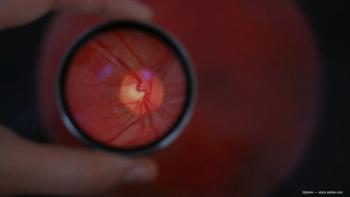
- Ophthalmology Times: July 2024
- Volume 49
- Issue 7
Study findings highlight trends in glaucoma surgeries, hinting at evolution
iStent implantations increased sharply, whereas trabeculectomies saw a decline.
Reviewed by Rahul Jayaram, BS; and Christopher Teng, MD, MBA
Results from a large national study that analyzed Medicare and Medicaid data found that an evolution in the types of glaucoma surgeries performed has been underway for more than a decade. Most notable was the widespread adoption of the iStent (Glaukos Corporation), which received FDA approval in 2012 for treating glaucoma. By 2021, the iStent accounted for almost 50% of glaucoma surgeries.
First author Rahul Jayaram, BS, a medical student, and senior author Christopher Teng, MD, MBA, from the Department of Ophthalmology and Visual Science at Yale University in New Haven, Connecticut, presented their findings at the Association for Research in Vision and Ophthalmology 2024 Annual Meeting in Seattle, Washington.
Another observation likely affected by the increased use of the iStent was a sharp decrease in the number of trabeculectomies performed, whereas the number of glaucoma drainage devices remained stable.
MIGS procedure
The analysis noted a trend toward the increasing popularity of minimally invasive glaucoma surgery (MIGS) procedures. “We have noted an increase in the number of MIGS devices on the market and a rise in their usage and wanted to investigate the utilization of all types of glaucoma procedures,” Teng explained.
Therefore, to determine the most current trends for glaucoma surgeries in the US, they conducted a retrospective, population-based analysis using the Centers for Medicare & Medicaid Services Part B National Summary
database from 2011 to 2021. Jayaram and Teng recounted that they analyzed the database to identify all relevant cases of trabeculectomy, glaucoma drainage implants (GDIs), and various MIGS procedures that included the iStent, goniotomy, trabeculectomy, endocyclophotocoagulation (ECP), CyPass Micro-Stent (Alcon), ab externo shunts, transluminal dilation, and the XEN Gel Stent (Allergan) based on procedural codes.
Analysis of glaucoma surgery preferences
After adjusting for inflation, the investigators noted “the total Medicare Part B payments for the selected glaucoma procedures increased from $71.5 million in 2011 to $246.1 million
in 2021.” The following are the top-line changes in the numbers of types of surgeries and costs:
- The total glaucoma surgeries significantly increased by 176.66%, from 80,151 in 2011 to 221,602 in 2021.
- Trabeculectomies took a significant decline of 58.5%, from 32,145 in 2011 to 13,345 (6% of all glaucoma surgeries) in 2021.
- The numbers of GDIs fluctuated over the study years, increasing from 17,848 in 2011 to 21,323 in 2013, followed by a decline to 17,337 (7.8% of all glaucoma surgeries) in 2021.
- The number of iStent implantations, a minimally invasive procedure, increased phenomenally by 247,141.67%, from 42 in 2011 to 103,601 (46.8% of all glaucoma surgeries) in 2021.
- From 2011 to 2015, the number of goniotomies performed rose from 95 to 249. By 2021, this number significantly increased by 15,231.73% to 38,159 goniotomies (17.2% of all glaucoma surgeries) in 2021.
- The number of transluminal dilations followed a similar trend to that of goniotomies, significantly increasing by 7544% from 399 in 2011 to 30,540 (13.8% of all glaucoma surgeries) in 2021.
- The use of ab externo shunts initially declined from 9947 in 2011 to 3973 in 2018, followed by a sharp increase to 11,531 (5.2% of all glaucoma surgeries) in 2021.
- ECPs significantly decreased by more than 94%, from 19,675 in 2011 to 1158 (0.5% of all glaucoma surgeries) in 2021.
- Most notably, the iStent accounted for 46.8% of all glaucoma procedures by 2021.
In commenting on their findings, the authors pointed out that “analyzing trends in utilization for glaucoma surgeries is critical for understanding the current landscape of glaucoma treatment.”
These findings further suggest a movement toward minimally invasive surgical options in glaucoma treatment. This shift is indicative of advancements in medical technology and the changing paradigms in the surgical management of glaucoma. Moreover, the authors also pointed out the importance of further research to determine the underlying factors behind each trend.
Rahul Jayaram, BS
Jayaram has no financial disclosures related to the content of this article.
Christopher Teng, MD, MBA
Teng has no financial disclosures related to the content of this article.
Articles in this issue
over 1 year ago
AI screening system increases adherenceover 1 year ago
A guide to treating severe ocular graft-vs-host diseaseNewsletter
Don’t miss out—get Ophthalmology Times updates on the latest clinical advancements and expert interviews, straight to your inbox.









































